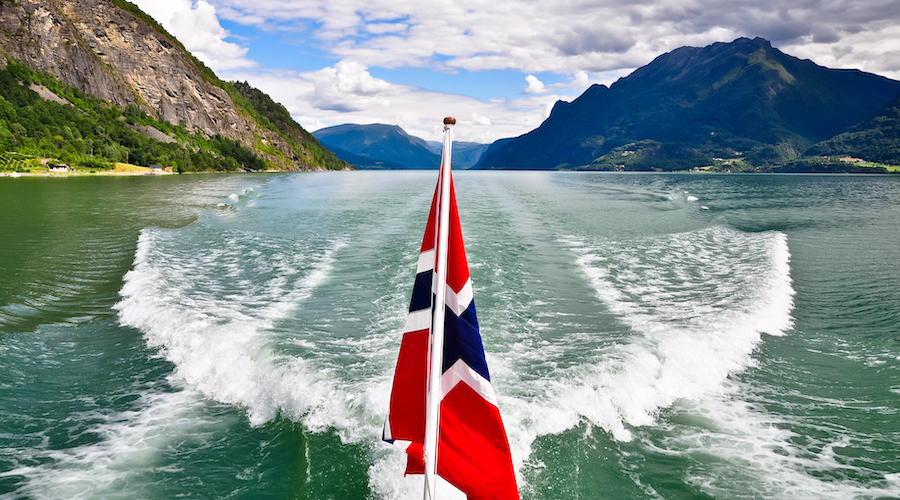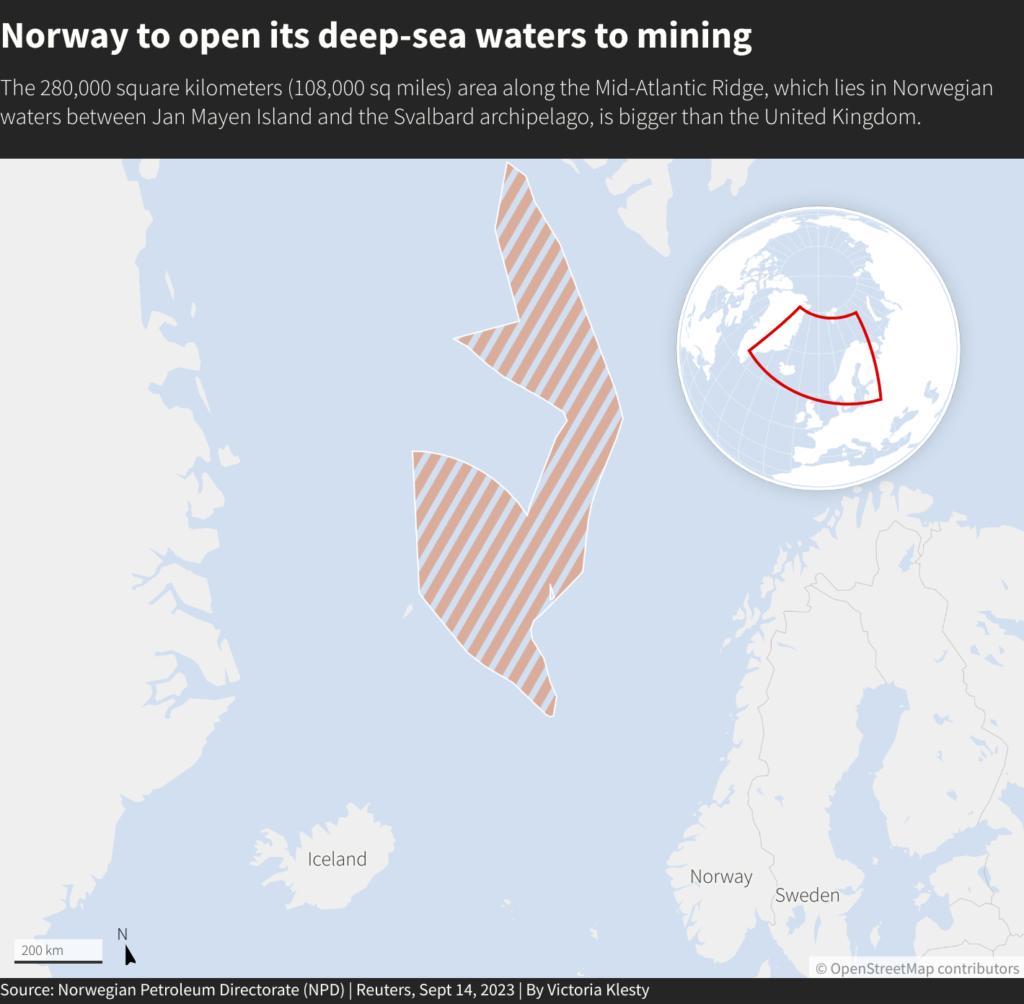Norway lawmakers back deep-sea mining in Arctic Ocean

Norway has secured a parliamentary majority to go ahead with plans to open the Arctic Ocean to seabed mineral exploration, despite environmental groups and the fishing industry’s warnings that the move would risk the biodiversity of vulnerable ecosystems.
The country’s minority centre-left government and two large opposition parties backed on Tuesday a government’s proposal announced in June to position the country as a frontrunner in commercial-scale deep-sea mining.
The move by the European country, where vast oil and gas reserves have made it one of the world’s wealthiest nations, has as goal to diversify its economy away from fossil fuels.
“The renewable green industries run on minerals. This is an important contribution internationally,” Bård Ludvig Thorheim, an MP from the main opposition Conservatives, said in the statement.
Backlash against the announcement was almost instant. The head of Greenpeace Norway, Frode Pleym, said the decision was “a disaster for the sea” and the mining would take place in “our last wilderness.”
“We do not know what consequences this will have for the ecosystems in the sea, for endangered species such as whales and seabirds, or for the fish stocks on which we base our livelihood,” he said.
Karoline Andaur, chief executive of wildlife campaign group WWF Norway, said the decision was “the biggest disgrace in Norway’s management of the oceans in modern times, and the final nail in the coffin for Norway’s reputation as a responsible maritime nation.”

Analysts highlight the risk of geopolitical tension in Europe’s northern and baltic region. The area Norway wants to open up to exploration, in the Barents Sea and Greenland Sea, is near its Arctic islands of Svalbard. Oslo claims it has the sole right to mine in this area, but Russia, the European Union and the dispute this claim.
According to the nation’s Ministry of Petroleum and Energy, the 280,000km2 (108,000 sq miles) along the mid-Atlantic Ridge, contains volcanic springs that surge from the Earth’s crust. They are believed to host an estimated 38 million tonnes of copper—more than the world’s approximate annual copper production.
A government-sponsored survey also found rare earth elements in polymetallic sulphides, or so-called “black smokers”, nearly 3,000 metres (9,842 feet) deep.
While international rules for seabed mineral extraction are yet to be set, Norway doesn’t need to wait, because it plans to search for minerals on its extended continental shelf.
Those that support the expansion of deep-sea mining believe that the action is central to meeting the increasing demand of mineral growth. The demand for copper and rare earth metals is predicted to grow by 40%, according to the International Energy Agency.
The agency also expects that demand for nickel, cobalt and lithium will increase by 60%, 70% and 90%, respectively.
More research needed
Opponents to seafloor mining have long-warned that consequences of both exploration and extraction of minerals from the seabed are unknown and that more research should be conducted before going ahead.
In a study focusing on the Clarion-Clipperton Zone (CCZ) in the Pacific Ocean, an area targeted for deep-sea mining stretching from Hawaii to Mexico, researchers discovered over 5,000 species, with the vast majority unknown to science.
“It’s critical that we address these data gaps so we actually can understand what species are there if mining happens,” said Muriel Rabone, a biologist and data analyst at the Natural History Museum in London and co-author of the study.
Another study, released Tuesday by Planet Tracker, compared three recent academic studies on the “nodule-to-commodity” climate impact of polymetallic nodules and land ores. It concluded that deep sea nodules could have 28% higher or 76% lower climate impact than land ores.
These variations, the report says, show that available studies do not provide a good enough basis for making decisions about the future of deep sea mining.
“Over 70% of greenhouse gas emissions for both land ores and deep sea nodules come from metallurgical processing — turning raw materials into useful metals,” the authors note. Climate impact is therefore less dependent on whether metals come from the deep sea or from land and more dependent on the properties of processing.”
Norway has defended it position, saying that any extraction would take place only with parliamentary approval, similar to the country’s proven system applied to its oil and gas industry.
Lawmakers are expected to formally debate and vote on January 4 on the government’s amended proposal, which sets stricter environmental survey requirements during the exploration phase than originally planned.
More News
{{ commodity.name }}
{{ post.title }}
{{ post.date }}



Comments
OTOH/IMHO
“Opponents to seafloor mining have long-warned that consequences of both exploration and extraction of minerals from the seabed are unknown…” Norway has benefitted greatly from offshore oil production, and the consequences of that to the ecostructure should be a matter of public record; the collection of metallic nodules, as performed by The Metals Company, for example, does not even involve installation of platforms or drilling, simply scooping these off the bottom. What does Greenpeace have to say about that?